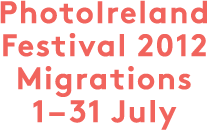Immigration has long been a popular cinematic theme.
Here you a few recommendations for movies that explore immigration issues:
DRAMA:
The Visitor (2007) 104 minutes, PG-13
In this fictional drama, an American college professor and a young immigrant couple grapple with the treatment of immigrants and the legal process post-9/11. The film makers are using the film to call attention to issues of due process, detention and deportation.
El Norte (1983) 140 minutes, R
Released in 1983 and nominated for an Oscar, the film is a classic. It tells the story of two young Guatemalans (Mayan Indians) who survive a military attack on their village. They make a harrowing journey through Mexico and across the border into Los Angeles only to find that “el Norte” is not all that it’s rumored to be. While fictional, the movie dutifully depicts the real life plight of Guatemalan and Salvadoran refugees of the 1980s, caught between brutally repressive regimes at home and a U.S. that generally refused to grant asylum.
DOCUMENTARY
Papers: Stories of Undocumented Youth (2009) 88 minutes, not rated
This film tells the stories of some of the 65,000 undocumented youth and the challenges they face as they turn 18 without legal status. These are young people who were educated in American schools, hold American values, know only the U.S. as home and who, upon high school graduation, find the door to their future slammed shut. Without “papers,” it is against the law to work or drive. It is difficult, if not impossible in some states, to attend college. They live at risk of arrest, detention and deportation to countries they may not even remember. Currently, there is no path to citizenship for these young people.
Tony & Janina’s American Wedding (2010) 83 minutes, not rated
After 18 years in America, Tony and Janina Wasilewski’s family is torn apart when Janina is deported back to Poland, taking their 6 year old son Brian with her. Set on the backdrop of the Chicago political scene, and featuring Illinois Congressman Luis Gutierrez at the heart of the immigration reform movement, this film follows the Wasilewski’s 3-year struggle to be reunited. With a fresh perspective on the immigration conversation, this film tells the untold human rights story of Post-9/11, that every undocumented immigrant in America faces today, with the power to open the conversation for change.
Dying to Live: A Migrant’s Journey (33 minutes)
A profound look at the human face of the immigrant. This film explores who these people are, why they leave their homes and what they face in their journey. Drawing on the insights of Pulitzer Prize winning photographers, theologians, Church and congressional leaders, activists, musicians and the immigrants themselves, this film exposes the places of conflict, pain and hope along the US-Mexico border. It is a reflection on the human struggle for a more dignified life and the search to find God in the midst of that struggle.
Farmingville (2009) 78 minutes, not rated
The documentary Farmingville tells the story of a suburban, Long Island town named Farmingville that made national headlines in the early-2000s when conflict over a sudden influx of Mexican day laborers tore the town in two. It’s the unique story of one particular town’s response to change and conflict, but it is also a story of unresolved national questions about labor, the economy, and immigration that are probably playing out in your communities, too.
9500 Liberty (2010) 81 minutes, not rated
Prince William County, Virginia becomes ground zero in America’s explosive battle over immigration policy when elected officials adopt a law requiring police officers to question anyone they have “probable cause” to suspect is an undocumented immigrant. 9500 Liberty reveals the startling vulnerability of a local government, targeted by national anti-immigration networks using the Internet to frighten and intimidate lawmakers and citizens.
The Least of These (2009) 62 minutes, not rated
Detention of immigrant children in a former medium-security prison in Texas leads to controversy when three activist attorneys discover troubling conditions at the facility. Watch free online at SnagFilms. Running time is just over one hour, making this a good film for a discussion night event that can fit into easily into peoples’ schedules.
Sentenced Home (2006) 53 minutes, not rated
Sentenced Home follows three young Cambodian Americans through the deportation process. Raised in inner city Seattle, they pay an unbearable price for mistakes they made as teenagers.
The 800 Mile Wall (2009) 90 minutes, not rated
The 800 Mile Wall highlights the construction of the new border walls along the U.S.-Mexico border as well as the effect on migrants trying to cross into the U.S. This powerful 90-minute film is an unflinching look at a failed U.S. border strategy that many believe has caused the death of thousands of migrants and violates fundamental human rights.
Made in L.A. (2011), 70 minutes not rated
Determined to win basic protections in the Los Angeles sweatshops where they work, three Latina immigrants embark on a three year odyssey that will transform their lives forever. From April 15th and May 31st, 2009, the filmmakers are inviting national organizations, grassroots groups, congregations and individuals across the country to organize screenings, house parties, and actions around Made in L.A. in a nationwide effort to support humane immigration reform. Learn more about the Community Screening Campaign. This film was partially funded through a grant from the Unitarian Universalist Fund for a Just Society.
This list appears at Cooking Together immigration justice blog.
You will find more movies (mostly commercial ones ) at MurthyDotCom web.
And a few more at suite101.









